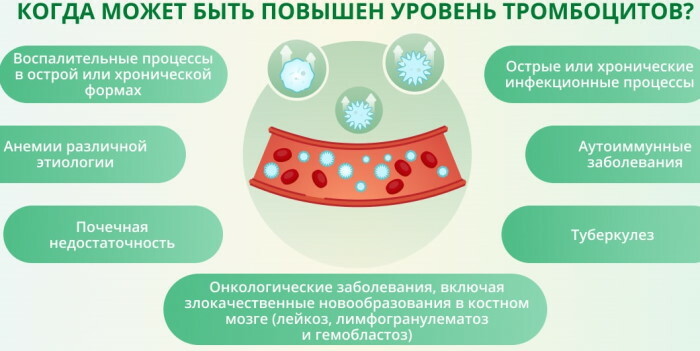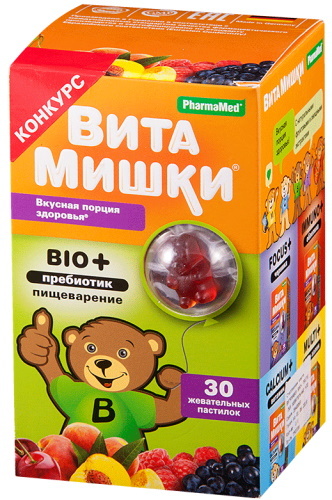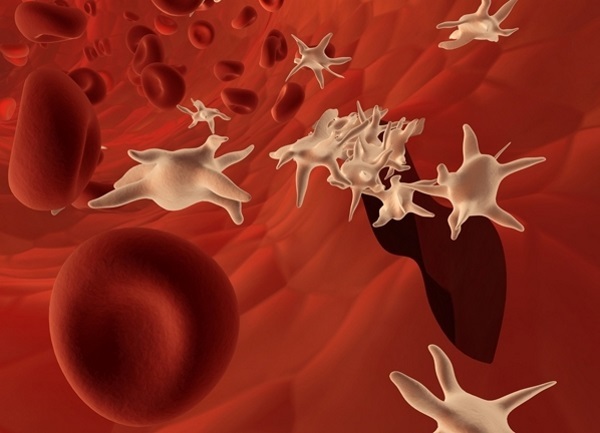Content
- Characteristics and properties
- The table is ok
- Symptoms of the rise and fall
- Reasons for promotion and demotion
- Indications for research
- How is it determined
- How to bounce back
- High rate
- Low level
- ethnoscience
- Video about PLT blood test
Clinical or general blood test - This is a simple, but quite informative diagnosis, which allows to assess the general condition of the body in adults and children and reveals even minor deviations from the norm.
In such a diagnostic study, erythrocytes, platelets, erythrocytes and other important blood parameters are counted. Their number may vary due to a pathological condition or other factors. When assessing the health of a child, it is important to know the PLT level, as it can indicate the development of serious ailments.
Characteristics and properties
PLT in a child's blood test is an indicator that indicates the number of platelets. Platelets are lamellar blood cells without nuclei. They are presented in three different forms: young, adult and mature. Their diameter is proportional to age: 2.3 and 4 microns. Platelets contain granules that help create proteins for blood clotting, lytic enzymes, phosphatase, cathepsin, serotonin, calcium ions, and also contain lysosomal enzymes.

They are produced by the bone marrow and are responsible for blood clotting. They also take an active part in the regeneration processes in case of damage to tissues and walls of blood vessels.
Platelets bind clotting factors, helping the clot to thicken. In an inactive state, in the event of damage to the vascular walls, platelets rush to the damaged area.
On the surface of the cell, there are pseudopods, which are fastened to each other and the vessel wall, form a thrombus, which acts as an excellent barrier to stop bleeding. But in an active state, platelets are able to easily change shape, increasing their area and completely covering the entire area of damage.
Also, platelets have a unique ability to protect the body from foreign bodies, which they catch with their pseudopods, and then they digest them with the help of a special enzyme lysocin. That is why platelets are very important for the immune response, acting as "killer" cells for all foreign bodies in the body.
The table is ok
PLT in a child's blood test is one of the important indicators that help assess the state of health. But when counting platelets, it is very important to take into account the age of the baby. The norm for children of different age categories is described in the table below.

| Child's age | Normal range of blood platelet counts g / L |
| In the first week after birth | 140-230 |
| From 7 to 30 days | 125-200 |
| From 1 to 2 months | 100-180 |
| From 2 to 3 months | 90-140 |
| From 3 to 6 months | 95-135 |
| From half a year to a year | 100-140 |
| From one year to three years | 105-145 |
| From 3 to 6 years old | 110-155 |
 A deviation from the norm within 50 cells is considered acceptable. In such cases, you should not worry and sound the alarm, but a deviation of more than 50 cells should force you to find out the reason for such a fluctuation. The platelet count may increase slightly after exercise. But a decrease in the level can be observed in adolescent girls during menstruation, after nosebleeds, with abrasions on the knees received during a walk.
A deviation from the norm within 50 cells is considered acceptable. In such cases, you should not worry and sound the alarm, but a deviation of more than 50 cells should force you to find out the reason for such a fluctuation. The platelet count may increase slightly after exercise. But a decrease in the level can be observed in adolescent girls during menstruation, after nosebleeds, with abrasions on the knees received during a walk.
Foods eaten before visiting the laboratory or drinking tea or juice can increase the level of platelets in the blood. If the deviation is large, then an additional examination by a hematologist will be required.
Symptoms of the rise and fall
PLT in a child is reduced, then this can be indicated by hemorrhages under the skin, which appear even with minor injury or slight compression of soft tissues.
Also, other symptoms can tell about a decrease in platelets in the blood:
- frequent bruising;
- small-point rash on the body;
- hemorrhage in the mucous membranes;
- bleeding gums.
If the level decreases sharply and rather quickly, then spontaneous bleeding in the organs may appear. If platelets are elevated, then this condition is called thrombocytosis and in most cases it is asymptomatic.
And if symptoms appear, then they are due to the blockade of blood vessels by blood clots and this condition manifests itself in the form of:
- a local increase in temperature in the extremities, often accompanied by severe pain syndrome;
- tingling or any other discomfort in the palms, fingers, or feet;
- discomfort in the chest area;
- loss of consciousness or flickering of incomprehensible spots in front of the eyes;
- headache;
- general weakness;
- dizziness.
You may also experience frequent bleeding from the nose, gums and digestive system.
Reasons for promotion and demotion
PLT in a child's blood test is below 100 g / l, then this condition is considered quite dangerous. With such indications, the baby's blood clotting is impaired - abrasions, scratches take a long time to heal, often causeless punctate hemorrhages and bruises appear, for a long time it is impossible to stop the nasal bleeding.
The main reasons for a decrease in the level of platelets in the blood of a child are:
- infectious diseases such as measles, rubella, smallpox;
- helminthic invasions: ascariasis, enterobiasis;
- diseases affecting the child's bone marrow: different types of anemia;
- thyrotoxicosis;
- atopic dermatitis;
- severe allergic reaction;
- the consequences of taking certain medications, for example, antibiotics, cytostatics;
- condition after undergoing radiation and chemotherapy;
- acute poisoning.
Recent illnesses, such as influenza, SARS, can lower the platelet count.
If the platelet level drops to 30 g / l, then this is considered a critical condition, the risk of internal bleeding in organs and the brain increases.
If the level of platelets in the child's body exceeds the norm by more than 50 g / l, then in medicine this condition is called thrombocytosis. This ailment is primary, when it is provoked by a disease of the bone marrow, or secondary, when the amount platelets are produced normally, but their level changes in relation to other blood enzymes in children the body.
The reasons for the increase in PLT may be the following diseases:
- malignant neoplasms: sarcoma, brain tumors;
- an inflammatory process that has affected the liver;
- spleen disease or condition after surgery;
- fractures of the lower extremities;
- myeloid leukemia or other specific ailments that have affected the bone marrow;
- taking drugs such as Aspirin or Co-trimoxazole.
Indications for research
Adults should be considerate of young children. They are not always able to explain their unusual symptoms on their own.
That is why adults should immediately seek the advice of a pediatrician if suddenly a child has such undesirable symptoms:
- persistent bleeding of the gums;
- frequent nosebleeds;
- bruising on the body, appearing for unknown reasons;
- frequent numbness of the limbs;
- general weakness;
- frequent complaints of headache and dizziness.
How is it determined
PLT in a child's blood test is determined using a routine clinical examination. The study is carried out in the morning and is mandatory only on an empty stomach.
At least 8 hours before blood sampling, any meals should be excluded, except for the mother's breast milk. No sweet tea, juice and other drinks, the exception can be purified water without gas. It is imperative to exclude any serious physical activity; before visiting the laboratory, the child must have a full sleep.
The blood sampling procedure itself is carried out in the following sequence:
- The laboratory assistant treats the pad of the baby's ring finger with an antiseptic composition, and then makes an easy puncture of the skin with a disposable sterile needle - a scarifier.
- The protruding blood is collected with a special pipette, and then sent to a test tube, which is later sent to the laboratory for subsequent study of its contents.
For babies, blood sampling is performed in exactly the same way, but only the blood is drawn from the heel. In rare cases, to obtain a more accurate result, a specialist may recommend taking blood from a vein.
How to bounce back
Parents are not always able to independently determine the level of platelets in the blood of their child, which is why it is recommended 1-2 times a year, and in some cases and more often to take a general blood test so that you can monitor indicators. If platelets are not normal, then it is very important for parents not only to undergo therapy, which is selected in each individual case by a specialist, but also take some precautions:
- try to protect the child from possible injury by protecting him from active games associated with the risk of bruising;
- replace the toothbrush with a softer and more gentle one;
- handle sharp objects with care;
- exclude the use of drugs that thin the blood, if the doctor has not prescribed them and he is completely sure that he simply needs them, for example, with a reduced level of platelets;
- attentively treats any hemorrhage and bleeding, if necessary, immediately seek qualified medical help.
High rate
If PLT is significantly higher than the established norm for a given age group of children, then the main reason for this condition should be sought in the overall health of the baby. It is possible to normalize a high platelet count with the help of medicines that can thin the blood.
The most effective and safe for young patients are considered to be those drugs based on acetylsalicylic acid, for example, Aspirin. But this drug has a lot of contraindications, and the main one is considered to be taken by children under 15 years of age. It is for this reason that it is very important that the doctor finds out the cause of the increase in platelets and selects a therapy to eliminate it.
In some cases, the pediatrician may recommend revising the diet and including foods that help create an acidic environment, such as taking cranberry juice. Products with a similar effect help to thin thick blood and do not harm the child's body.
Low level
If the child's platelet level is significantly lower than normal, then vitamin-mineral complexes, or rather preparations containing a large amount of vitamins K and B9, will help to bring them back to normal.
It is these vitamins that promote cell division, including platelets.
-
Alphabet Our Kid. This is a multivitamin complex for children, which contains almost everything necessary for the proper development of a child and normalizing platelets in the blood.
 The manufacturer included vitamins A, B1, 2, 6, 12, D3, C, E, PP, folic and pantothenic acids, minerals. A vitamin complex is produced in the form of a powder, from which a delicious drink is further prepared. The three types of sachets have their own composition, developed taking into account the compatibility of substances, and each sachet is marked with an indication of the time of intake. Dosage and method of application: Dissolve the powder in 30 ml of water, take three times a day. According to experts, after two weeks of regular intake, an increase in the number of platelets in the blood is observed and the overall health of the baby improves.
The manufacturer included vitamins A, B1, 2, 6, 12, D3, C, E, PP, folic and pantothenic acids, minerals. A vitamin complex is produced in the form of a powder, from which a delicious drink is further prepared. The three types of sachets have their own composition, developed taking into account the compatibility of substances, and each sachet is marked with an indication of the time of intake. Dosage and method of application: Dissolve the powder in 30 ml of water, take three times a day. According to experts, after two weeks of regular intake, an increase in the number of platelets in the blood is observed and the overall health of the baby improves. - Vitamishki pastilles Is another drug that is often prescribed for young patients with low blood platelet counts. The manufacturer included the following vitamins in its composition: C, E, A, D3, B6, B12, minerals, folic and pantothenic acids. The pastilles have a pleasant taste, thanks to which children take them with great pleasure. It is recommended to take no more than 1 lozenge per day. This amount is sufficient to provide the daily dose of the child's body with the necessary nutrition. According to experts, the drug gives good results in the first few weeks.
It is very important to revise the diet of a child who has a sharp decrease in the number of platelets in the blood. It is better to introduce natural products into the diet, which contain omega-3 fatty acids. Fatty acids prevail in large quantities in fish, eggs, walnuts, seaweed.
ethnoscience
For more than one hundred years, blood has been thinned with folk remedies, for example, with raw materials, which in the 19th century gave life to aspirin, which is actively used for these purposes today. Willow bark gives a good effect. Scientists have proven that it does not have a negative effect on the mucous membrane of the digestive system, as, for example, acetylsalicylic acid. It is for this reason that a special decoction is often prescribed for therapeutic purposes for young patients.
A medicinal decoction is prepared in this way:
- you will need to take 1 tbsp. l. willow bark;
- pour 250 ml of boiling water;
- leave the mixture to simmer over a chalk fire for about 10 minutes;
- remove from heat, leave to brew for an hour, strain;
- bring the volume to 250 ml.
The resulting infusion is drunk in small sips throughout the day. A good effect and quite strong in thinning the blood was seen when taking sweet clover yellow. But this remedy has contraindications, so it is better to consult a doctor before taking it.
It is better to buy the herb itself at the pharmacy, because not everyone knows all the intricacies of its collection. It is better for children to make tea from sweet clover. For 1 liter of water, 1 tbsp is taken. l. herbs. Brew, cool slightly, strain and drink 2-3 tbsp. l. morning, afternoon and evening. The course is selected individually, depending on what kind of reason provoked the deviation from the norm.
Traditional medicine in combination with a proper diet give good results and easily lead to the norm is not only platelets in the child's blood, but also others important for his active growth and development indicators.

PLT is a very important indicator in the blood test of a child of any age. This is especially important for premature babies and babies with congenital abnormalities. The platelet count allows you to determine how actively the disease develops, as well as how effective the selected treatment is.
A specialist should read the results obtained and find the cause of deviations from the norm. The thing is that not always deviations can speak of pathology, perhaps this is a temporary deviation, for example, during menstruation in adolescent girls.
Video about PLT blood test
PLT blood test:



